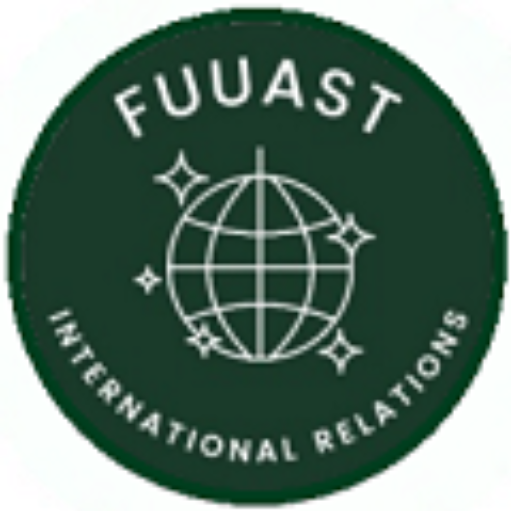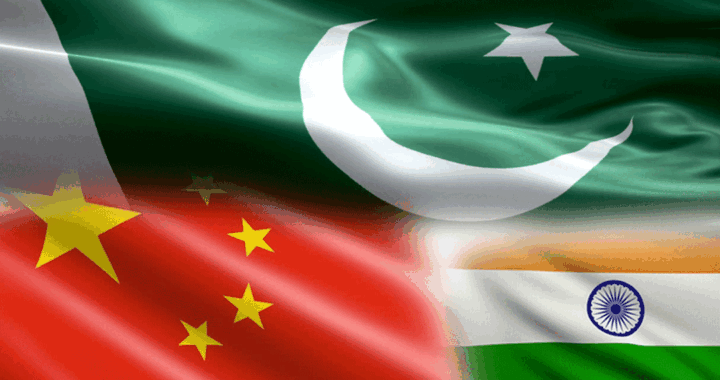Written By :Munazza Khan
Without considering the triangle dynamics that shape these exchanges, a comprehension of the security environment in Southern Asia is lacking. Understanding the India-Pakistan-China triangle and how the strategic chain, including the United States, affects it is essential to comprehending regional dynamics.
With recurrent military clashes between India and China at the Line of Actual Control (LAC) and India and Pakistan at the Line of Control (LoC), the India-Pakistan-China triangle is entangled in a complicated history of unsolved border disputes. As a result of post-war decolonization, Britain’s quick exit from the subcontinent in 1947 caused a hasty redrawing of political boundaries in Southern Asia, leaving some area in dispute. This lengthy history can be used to explain the origins of the four wars that India and Pakistan have fought since 1947, the Sino-Indian Border War in 1962, and the ongoing hostilities between India and China and India and Pakistan at the LAC and LoC. After the Sino-Indian Boundary War of 1962, when Beijing and Islamabad signed the border delimitation agreement in 1963, the military aspect of this triangle began to take shape. The Trans-Karakoram tract, which India claimed as part of Kashmir, was given to China by Pakistan as a result of this arrangement, making the conflict a trilateral one. Further, Pakistan chose to deepen its ties with China during the 1965 India-Pakistan War because it felt deceived by the absence of American support. Due to the 1954 Mutual Defense Agreement between the United States and Pakistan and Pakistan’s participation in U.S.-engineered alliances like the Southeast Asia Treaty Organization and the Central Treaty Organization, Pakistan had anticipated that the United States would lean in its favour. However, during and after the 1962 conflict, the United States shown an up to that point unheard-of willingness to support and aid the military of India against the Communist Party of China, making it wise for China and Pakistan to work together. Despite the fact that Washington said that arming both Pakistan and India would help it achieve its Cold War goal of containing communism in Asia, neither country believed Washington’s claims that its military aid was not intended to be used against one another. Although China did not directly aid its new ally Pakistan militarily during the 1965 war, it did psychologically attack India by accusing New Delhi of acting aggressively along the India-China border and threatening Chinese retaliation.The United States leaned towards Pakistan during and after the 1971 India-Pakistan War because it needed Islamabad to serve as a conduit to Beijing during the 1972 Sino-U.S. rapprochement talks. In the final Cold War conflict between the United States and the Soviet Union, Pakistan began to play a frontline role for the United States in Afghanistan. Geopolitics prevailed in this situation, and Washington disregarded intelligence indicating that China was assisting Pakistan in building a nuclear weapon. Even though there were attempts to find common ground under the Reagan administration, these circumstances were hardly favourable for a strong Indo-U.S. relationship. China’s and India’s subsequent rise to global prominence after the Cold War changed the dynamics of the India-China dyad, intensifying Sino-Indian rivalry and strengthening Sino-Pakistan military ties. While this was going on, the tense relationship between India and Pakistan only grew more so as cross-border terrorism that originated in Pakistan targeted India continued to stand in the way of improving relations.
Strategic analysts are increasingly in agreement that a triangle, as opposed to an India-Pakistan dyad, best describes the security dynamics of Southern Asia. However, because external actors are so important in determining outcomes inside this triangle, it may be more accurate to think of regional dynamics as a strategic chain in which the United States is the most important external agent of influence. As conceptual frameworks for comprehending the geopolitics of Southern Asia, the triangle and the strategic chain are complimentary rather than antagonistic. Looking at how the U.S. position confounds responses and counter-responses in this triangle completes the picture, even if the fundamental security conundrum in the India-Pakistan-China triangle continues to be a significant determining element of the regional security environment. The Indo-U.S. relationship’s concerns about China’s rise, China and Pakistan’s perceptions of this partnership as a threat, and India’s concerns about the China-Pakistan alliance can all be used to explain the region’s changing security environment.
As Chinese influence grows in the marine and continental region surrounding India, New Delhi has contacted China’s neighbours to forge alliances with nations in Southeast and East Asia. Greater strategic affinities between New Delhi and Washington are the result of growing Sino-Indian conflict in both the continental and marine spheres, as well as the struggle for global dominance between China and the United States. Beijing, on the other hand, tries to persuade New Delhi not to entirely align with the United States against China by engaging India in a number of forums, including the Shanghai Cooperation Organization (SCO), Russia-India-China (RIC), and Brazil, Russia, India, China, Russia, South Africa (BRICS). On the other side, through contentious initiatives like the China-Pakistan Economic Corridor (CPEC), the centrepiece of its grandiose Belt and Road Initiative, Beijing strengthens its strategic outreach to Pakistan, which by nature isolates India (BRI). The strategic chain serves as an effective addition to describe the geopolitics of Southern Asia since the interconnecting threat perceptions and responses in the triangle cannot be separated from the American strategy in the area.India’s application for membership in the Nuclear Suppliers Group serves as an example of how the strategic alliance between China, Pakistan, the United States, and India may complicate events in Southern Asia. Another concern affecting this strategic link is the security of Afghanistan during the American exit, as China’s political and economic involvement in Afghanistan goes through Pakistan.
The India-Pakistan-China triangle faces a security conundrum, justifying China-Pakistan cooperation to stall India’s rise. The triangle is also impacted by how China views a U.S. containment policy that includes India. The likelihood of crises and violence at the LAC and LoC will continue to be influenced by the widespread mistrust and zero-sum perceptions.

